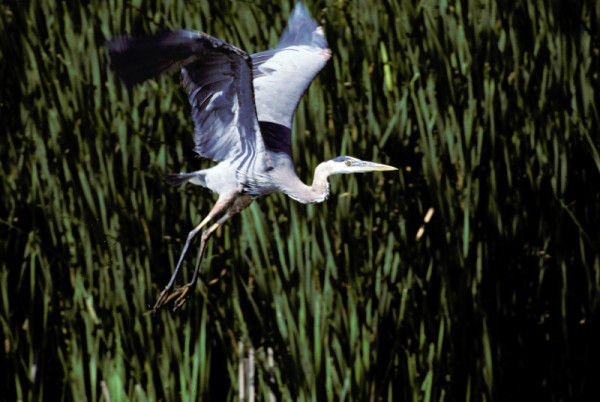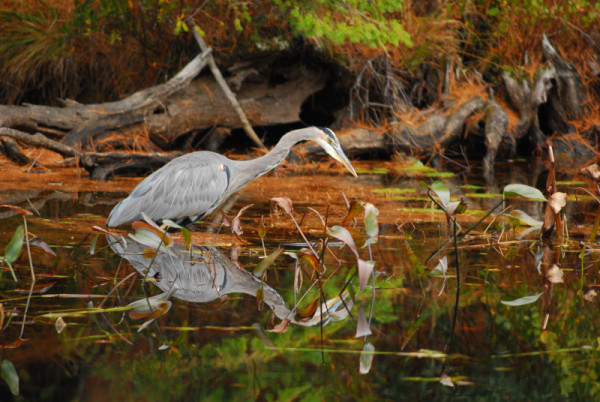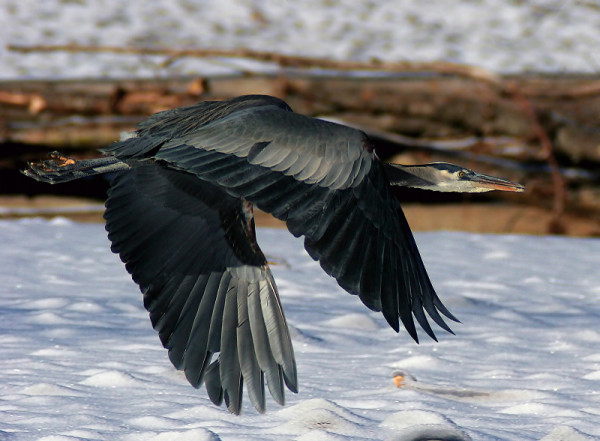Meet our Species of the Month: the great blue heron!
Written By Joanna Barrington, Manager, Strategic Partnerships
This new blog series on Canadian wildlife will explore key facts, threats and what WWF is doing to conserve these species. These Canadian species are also featured in the TELUS 2014 calendar. Check out the digital calendar and you can follow along with fun activities, download beautiful desktop wallpapers, colouring pages and more.
There is nothing more beautiful than watching a great blue heron perched motionless on the end of a dock on a calm lake, early in the morning. If you’re lucky enough to see it spread its large wings and take flight, then you know how surprisingly quiet they are. An inspiring sight!
The scientific name for the great blue heron is Ardea herodias. This gorgeous waterbird has a distinctly long curved neck, long legs and short tail. Mostly a grayish blue color, the heron’s feathers turn brighter during mating season and duller in the winter. Although they are on average over a meter high in height, they only weigh on average two kilograms!
This species’ range in Canada covers from the Maritimes to British Columbia with current populations in the tens of thousands. The great blue heron can also be found through the United States, Mexico, Central America and the Caribbean.
Did you know?
The great blue heron holds their neck in an “S” shape when in flight.
Its stilt-like legs allow the heron to search and feed on fish and frogs in shallow water. Salamander, shrimp, mice and large insects make up the rest of the bird’s diet.
Why is the great blue heron at risk?
Canada is the breeding home to about half of the global population of great blue heron. There are five subspecies of the great blue heron and two of which live in B.C. Threats to this species include nesting grounds and habitat loss due to logging and urban development. At present, the great blue heron’s nests and eggs are protected under the British Columbia government’s Wildlife Act and the Migratory Birds Convention Act. In February 2010, the subspecies Ardea herodias fannini,which lives year round on the BC coast, was designated as of “Special Concern” by the Species at Risk Act (SARA).
What is WWF doing?
WWF is working on freshwater health across Canada to address threats to the bird’s wetland nesting areas. These efforts include supporting the development of B.C.’s proposed new Water Sustainability Act to increase the protection of the province’s waters and aquatic ecosystems.
WWF-Canada and TELUS are partnering to support the conservation of Canadian wildlife and their habitats through a new $1 million, four-year partnership. Visit www.givewherewelive.ca to learn more.




